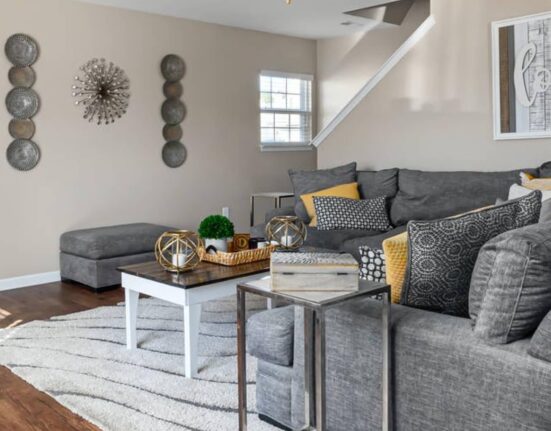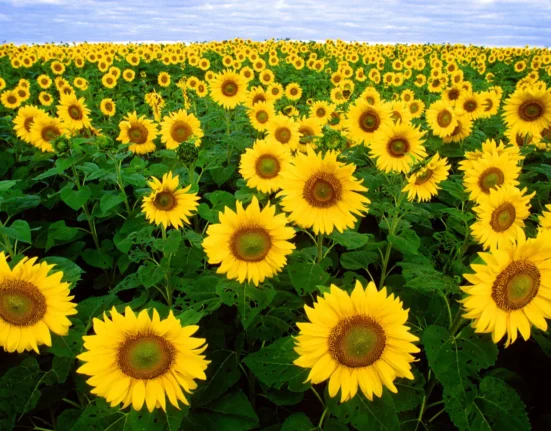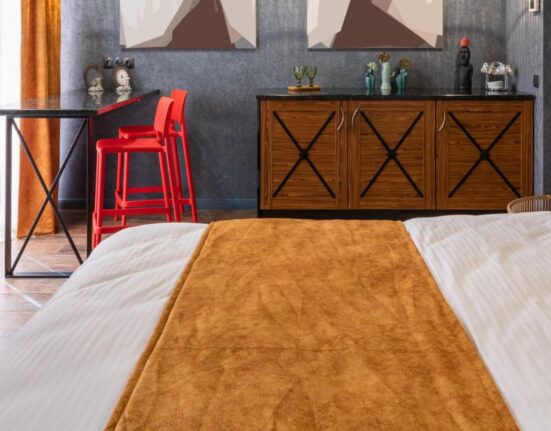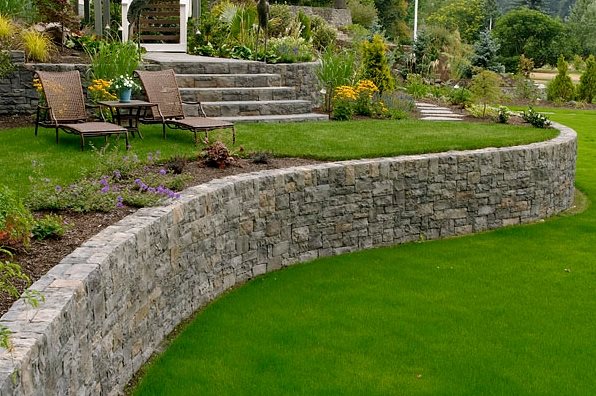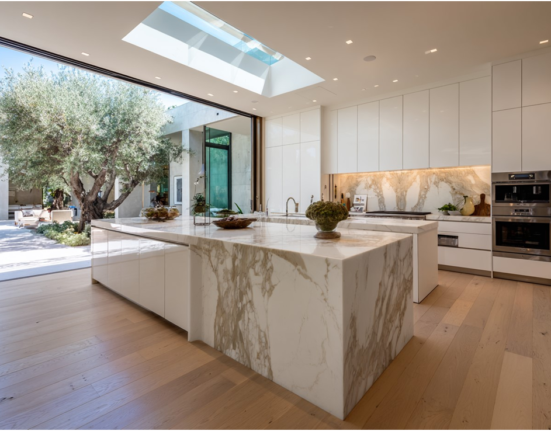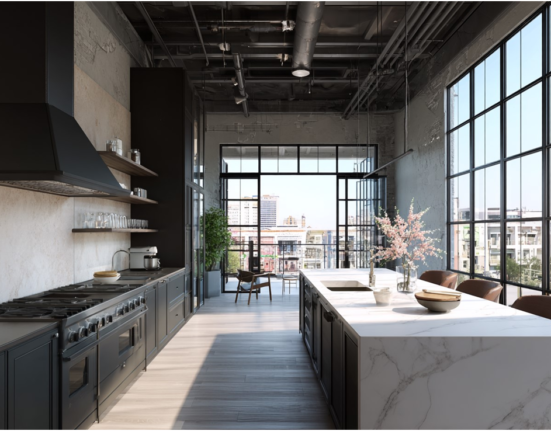In the quiet town of Millstone, Karen and her family faced a dilemma. Their backyard sloped dramatically towards the neighbor’s fence, which had become a challenge every rainy season. Erosion had taken away more of their lawn, leaving a barren patch of earth where once there was grass for their kids to play. Determined to reclaim their yard, Karen began researching retaining wall ideas—something that could not only prevent erosion but also transform the space into a beautiful, functional outdoor haven.
This story is not uncommon. Across the country, many homeowners are looking for ways to combine practicality with aesthetics, and retaining walls offer the perfect solution. But what kind of retaining wall is best for your needs? Let’s explore some creative and durable retaining wall ideas that will enhance the look of your yard and protect your property from erosion and runoff.
Natural Stone Retaining Walls: Timeless Elegance
Natural stone walls are a popular choice for their rustic and elegant appearance. Using large, flat stones like flagstone or fieldstone, you can create a natural-looking barrier that blends seamlessly with the landscape. This type of retaining wall is not only visually stunning but also long-lasting if appropriately constructed. Stone walls have been used for centuries, withstanding the test of time.
One key advantage of natural stone walls is their durability. A well-constructed stone wall can last for decades. Additionally, natural stone doesn’t retain heat like concrete, keeping your garden cooler in the summer months. According to a study published by the Landscape and Urban Planning Journal, the natural aesthetics of stone materials can increase property value by up to 15%, especially in areas with highly prized outdoor living spaces.
Timber Retaining Walls: Warm and Affordable
Timber might be your best bet if you’re looking for a budget-friendly retaining wall option. Timber retaining walls offer a warm, organic look that can soften the harshness of a sloping yard. They are relatively easy to construct and don’t require the extensive labor that stone or concrete walls often demand.
However, it’s important to note that timber retaining walls may not last as long as other options, especially in damp climates. Treated wood can resist rot and insect damage, extending its life to 20 years or more, but eventually, it may need to be replaced. In terms of cost, timber walls typically range from $15 to $25 per square foot, making them a more affordable option for many homeowners.
Concrete Block Retaining Walls: Versatility at Its Best
Concrete block retaining walls are one of the most versatile options. They offer a clean, modern aesthetic and are highly customizable. With interlocking concrete blocks, you can create curved or straight walls that suit the contours of your yard.
Concrete block walls are also solid and durable. According to the American Society of Landscape Architects (ASLA), concrete block retaining walls can last over 50 years if properly maintained. Additionally, their modular design makes them relatively easy to install. Many homeowners choose concrete blocks because they allow for greater flexibility in height and design.
A notable feature of concrete block walls is the variety of finishes available, including smooth, split-face, or textured surfaces. This means you can tailor the wall’s appearance to match the style of your home and garden.
Gabion Retaining Walls: Rugged and Eco-Friendly
Gabion walls offer a sustainable solution for those who are environmentally conscious. These retaining walls are made from metal cages filled with rocks, stones, or other materials. This type of wall has gained popularity in recent years due to its rugged, industrial look and eco-friendly construction.
Gabion walls are also highly effective in preventing erosion. The open structure allows water to drain through, reducing pressure on the wall and minimizing runoff. In fact, according to the Journal of Geotechnical and Geoenvironmental Engineering, gabion walls can reduce stormwater runoff by up to 50%, making them an excellent choice for areas with heavy rainfall.
Additionally, gabion walls are relatively inexpensive. Depending on the materials used, they typically cost from $10 to $40 per square foot. Plus, they’re easy to maintain and can be constructed using recycled materials, which adds to their eco-friendly appeal.
Boulder Retaining Walls: For a Bold Statement
Boulder retaining walls can be an excellent option for a dramatic, natural look. Large, heavy boulders are stacked to create a wall that is not only functional but also a statement piece. These walls are especially effective in steep slopes, where other materials might not be strong enough to hold back the earth.
The rugged appearance of boulder walls works well in rustic or naturalistic landscapes. While installing a boulder wall can be more labor-intensive and costly—ranging from $20 to $50 per square foot—its strength and longevity make it worth the investment.
Boulder retaining walls are particularly effective in regions prone to heavy rainfall or soil erosion. The weight and size of the boulders create a stable barrier that can last a lifetime if properly maintained.
Green Retaining Walls: Blending Nature and Function
Green or living walls are a fantastic way to incorporate plants into your retaining wall design. These walls are built with pockets or shelves that allow you to grow plants directly on the wall’s surface. This creates a visually stunning wall and offers environmental benefits like improved air quality and reduced heat island effects.
Living walls can be constructed using various materials, such as concrete blocks, timber, or metal. They’re an excellent option for urban gardens or anyone looking to maximize green space in a small yard. According to a study by the American Horticultural Society, green walls can reduce air pollution by up to 30%, making them a popular choice in cities where outdoor air quality is a concern.
Stacked Stone Retaining Walls: DIY-Friendly and Stylish
If you enjoy hands-on projects, stacked stone retaining walls are a great option. These walls are built by simply stacking stones without mortar, making them relatively easy for a DIY enthusiast to construct. The key to a successful stacked stone wall is selecting stones that fit together tightly, creating a stable, interlocking structure.
While stacked stone walls may not be as strong as mortared stone or concrete walls, they are beautiful and perfect for smaller projects, such as garden beds or terraced planting areas. The natural beauty of the rocks creates a timeless look that blends well with most landscapes.
Conclusion: Enhancing Your Yard with a Functional and Beautiful Retaining Wall
Retaining walls offer more than just structural support for sloping landscapes. They can transform your outdoor space into a visually stunning and highly functional area. Whether you prefer the classic elegance of natural stone, the modern versatility of concrete blocks, or the eco-friendly benefits of gabion walls, there’s a retaining wall idea to suit every style and budget.
By carefully considering the materials, design, and purpose of your wall, you can create a retaining structure that serves a practical purpose and enhances your home’s beauty and value. As Karen discovered with her backyard project, the right retaining wall can turn a challenging landscape into a dream outdoor space.




